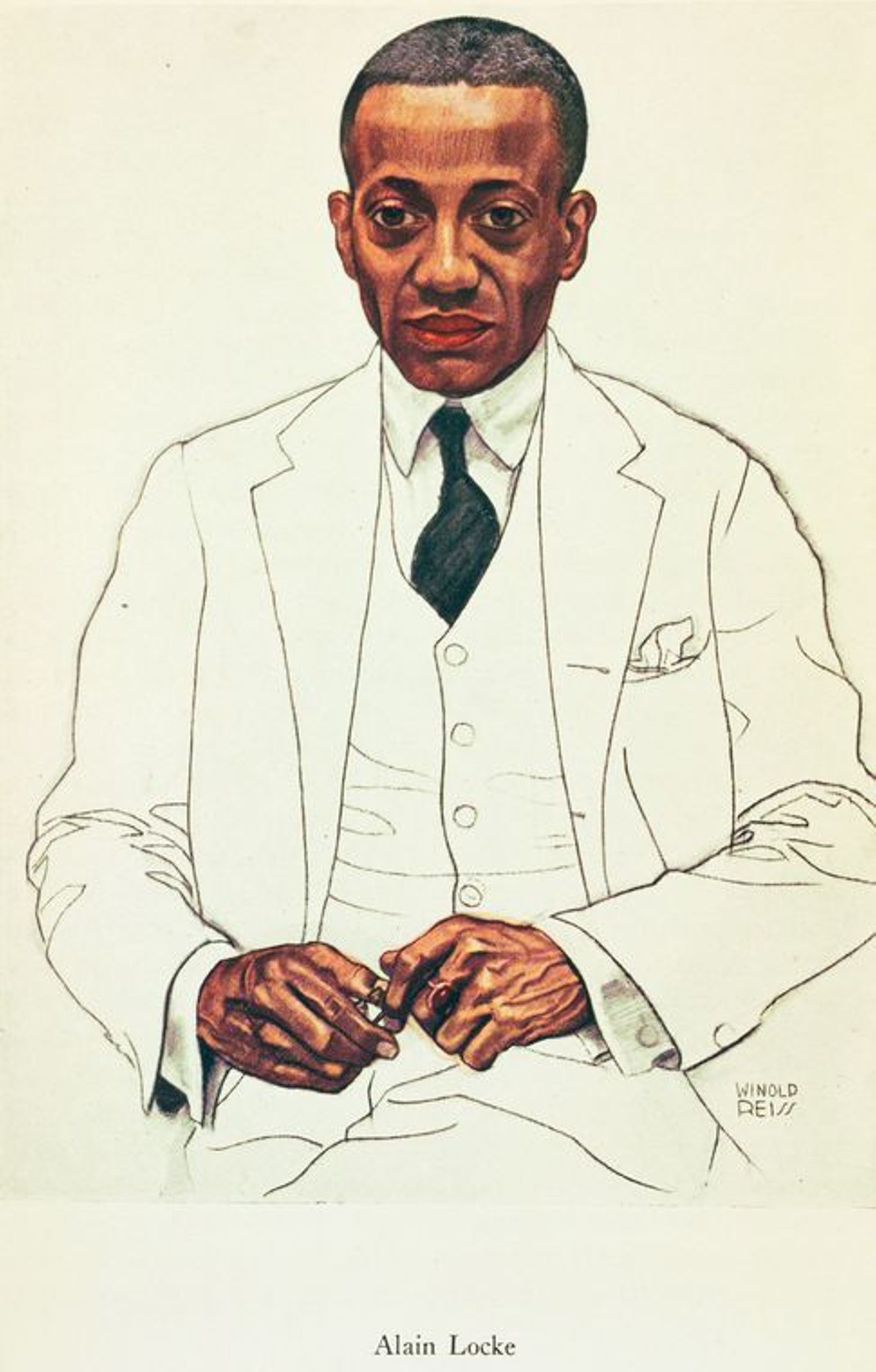
Sometimes, the name of an important historical figure that one has heard of, and may have some vague knowledge of, suddenly seems to become ubiquitous. This past spring, the name of Alain Locke was such an instance for me.
On March 17, I visited the exhibition The Harlem Renaissance and Transatlantic Modernism at the Metropolitan Museum of Art, where I was reminded that Locke is considered one of the chief intellectual forces behind the movement and era known as the Harlem Renaissance of the 1920s and 30s. His portrait is on the wall of the first gallery, and a copy of the seminal work he edited, The New Negro: an Interpretation, of 1925 is in a vitrine placed centrally in the room.
On March 24, one week later, I attended the exhibition Going Dark: the Contemporary Figure at the Edge of Visibility at the Guggenheim Museum. While this show dealt chiefly with living artists, many from the African Diaspora, there were again references to the life and work of Alain Locke, both in the art and in the curators’ wall text.
A couple weeks later, on April 6, I made my biannual trip to the Whitney Biennial. As always there was a diverse range of works and practices, some of which I found more moving than others, until I came to the last large room, and was completely engrossed in the multi-channel video installation Once Again…(Statues Never Die), by Isaac Julien. This work “reflects on the life and thought of Alain Locke (1885–1954), philosopher, educator, and cultural critic of the Harlem Renaissance” (from the Whitney website).
Three terrific and unrelated exhibitions at disparate venues were telling me I needed to get to the primary sources and read the work of Alain Locke. As I walked down 125th Street in the heart of Harlem, as I do every morning on my commute to work (transferring from the MetroNorth to the 6 Train), it occurred to me to check our catalogue and see what was in our stacks. During a quiet moment of one of my first shifts on the Reference Desk, I found The Works of Alain Locke, edited by Charles Molesworth, Oxford University Press, 2012. This 500+ page collection of essays on literary criticism, the visual and performing arts, aesthetics, race, and democracy went home with me immediately; exploring our electronic resources I went to our online subscription to American National Biography, and read the entry on Alain Locke, and learned the outline of his life, from his birth in 1885, through his becoming the first African American Rhodes Scholar at Oxford while working on his PhD from Harvard, through his becoming a Professor of Philosophy at Howard University.
Realizing the importance of his foundational work, the editing and production of The New Negro: an Interpretation, that I had seen in the vitrine at the Met, I was delighted to find our own first edition in our stacks; though its brittle pages made me contact our Special Collections Librarian to have her evaluate it for Special Collections while I ordered a reprint for the circulating stacks. Reading these works, and his discussion of such important figures across all disciplines, from Langston Hughes, to Duke Ellington, to Paul Robeson, to W.E.B. DuBois had me returning to our catalog, and discovering how deep and wide our holdings are.
And if you are in our neighborhood, I highly recommend a visit to the exhibition The Harlem Renaissance and Transatlantic Modernism at the Met, up through July 28th.



